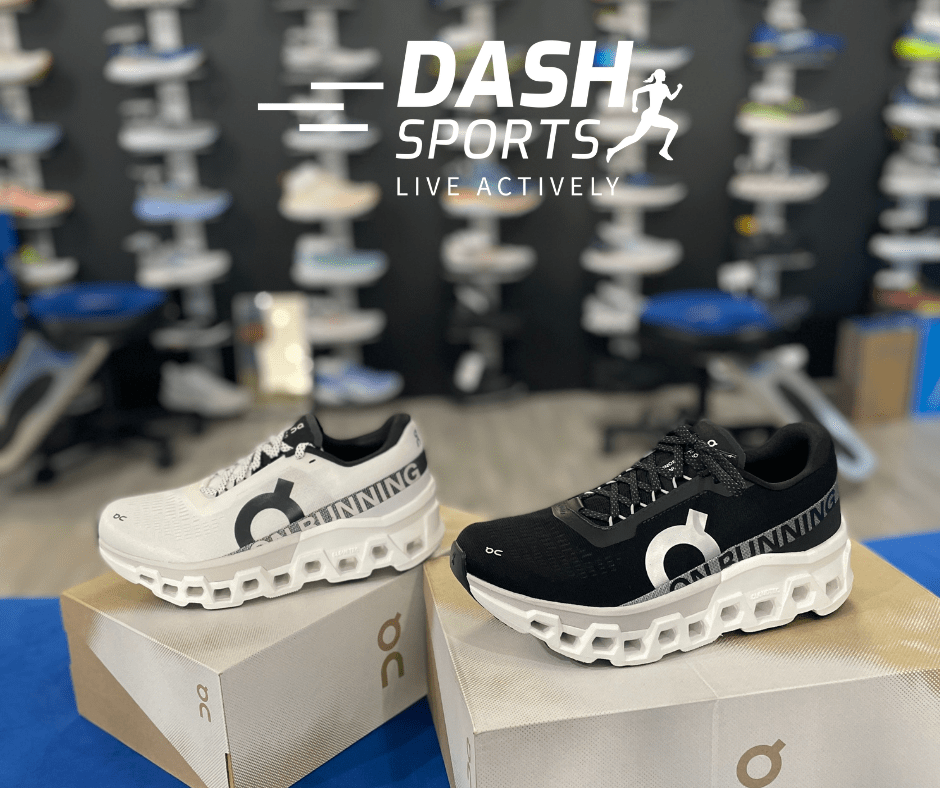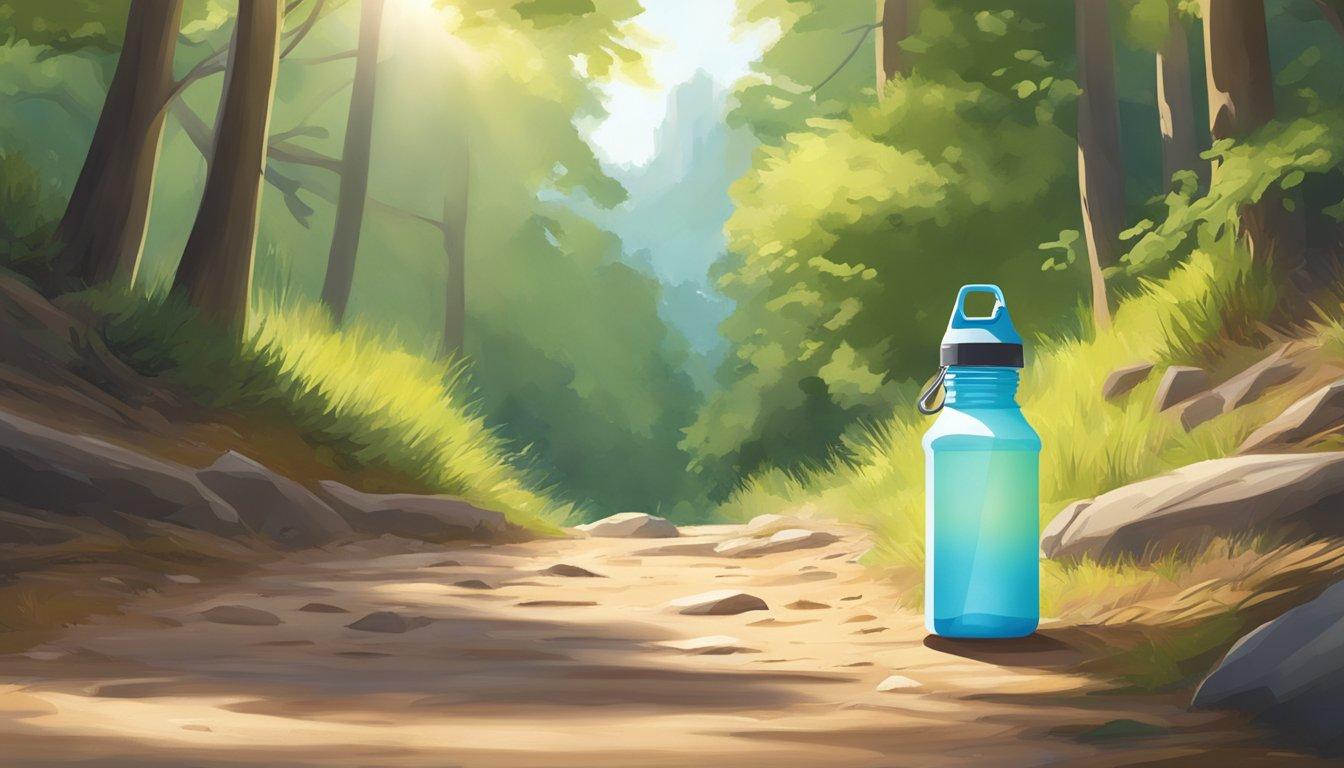Selecting the right running shoes is a critical step for runners of all levels.
A proper fit not only enhances comfort during your runs but also helps prevent injuries and improves performance.
Understanding how running shoes should fit can make a considerable difference in your running experience.
The fit criteria should take into account the size, shape, and movement of your feet to ensure the shoes provide the right support and cushioning where it’s needed most.
- Explore Our Store Today
Experience the unique Dash Sports approach with our tailored shoe fitting service.
When trying on running shoes, check that there’s about a thumb’s width of space between your longest toe and the end of the shoe.
This allows for foot expansion during long runs. A snug midfoot and heel are essential for stability without being overly tight to avoid discomfort or blisters.
The right shoe should feel like an extension of your foot, moving with you and providing support without constricting your natural stride.
With the vast array of brands and models available, finding your ideal running shoes may require some guidance.
Various brands have different sizing standards; even models within the same brand can fit differently.
To help with this, tools such as a Perfect Fit Finder can streamline the process.
They offer personalized recommendations based on your individual foot characteristics and running style.
Understanding Running Shoe Anatomy
When selecting a running shoe, it’s crucial to understand its structure and how each part contributes to overall performance and fit. Different materials and design aspects in each section can significantly influence your experience.
Materials
Running shoes are crafted from a variety of materials to offer support, flexibility, and breathability.
The materials used in the upper tend to be lightweight mesh for airflow, while the midsole often consists of foam compounds like ethylene-vinyl acetate (EVA) for cushioning and polyurethane for durability.
Shoe Upper
The upper part of a running shoe is designed to encase your foot comfortably.
It’s constructed to provide a snug fit, supporting your foot’s natural shape and movement. Premium running shoes may incorporate advanced fabrics with moisture-wicking properties to keep your feet dry.
Toe Box
The toe box should allow for natural toe splay, aiding in balance and propulsion.
It’s important that there’s enough room to prevent any rubbing or squishing of the toes, which could lead to discomfort or blisters.
Midfoot Structure
The midfoot structure serves as the bridge between the front and back of your foot.
It is often reinforced with strategically placed overlays or bands for added support. This area ensures a secure fit and stabilizes your foot during motion.
Heel Counter
Situated at the rear of the shoe, the heel counter provides a firm grip around your heel, enhancing the shoe’s fit and reducing slippage.
A robust heel counter can also improve the shoe’s alignment with your foot, providing a stable base for every stride.
Essentials of Fitting
When selecting running shoes, it’s vital to prioritize a proper fit over brand and style—they are the foundation to your running comfort and performance.
Measuring Your Feet
Before looking for new running shoes, measure your feet with a Brannock Device for the most accurate foot measurement.
Your foot size can change over time, and factors like swelling can influence the measurement. Always measure both feet since there can be slight differences in length and width between them.
Size and Fit
Getting the right shoe size is crucial, but fit involves more than length.
Your running shoes should feel snug, not tight, across the midfoot while leaving some space for your toes to move. Shoes that fit well promote better alignment and can reduce the risk of injury.
Width Considerations
The width of a running shoe is equally important as the length.
Your feet shouldn’t spill over the edge of the insole, and the shoes shouldn’t pinch or leave excessive space on the sides. A proper fit in width ensures balanced pressure distribution and helps to avoid blisters or calluses.
Length and Toe Space
The length of your running shoes should allow for a thumb’s width of space between your longest toe and the end of the shoe.
This extra room accommodates foot elongation during your run and prevents your toes from hitting the front of the shoe, which could lead to bruising or lost toenails.
Running Dynamics and Shoe Fit
When assessing the ideal fit for running shoes, it is crucial to consider factors such as your gait, foot alignment, and arch height—elements that directly impact comfort and performance.
Gait Analysis
Understanding your gait is the first step toward selecting shoes that cater to your running style.
A gait analysis can reveal if you overpronate (roll inward) or supinate (roll outward), which influences the type of support you require.
Running stores often offer gait analysis to match you with proper footwear.
Foot Alignment and Arch Height
Your foot alignment and arch height significantly affect which running shoe will fit you best.
Proper alignment ensures balanced pressure distribution and can be measured with tools like a 3D scanner or pressure mat. Shoes with the right fit can help alleviate issues caused by arch height discrepancies.
- Low arches may need shoes that offer stability to prevent overpronation.
- High arches often require shoes with ample cushioning to absorb impact.
Foot Arch Types
Shoes are constructed to accommodate different foot arch types:
- Neutral arches: You’ll benefit from shoes that provide a balance of stability and cushioning.
- Flat arches: Look for shoes designed to stabilize and support your pronation pattern.
- High arches: Cushioning is critical for high arches to assist in shock absorption during your run.
For the best fit, test the shoes by running in them to ensure there’s no slipping or excess pressure on any part of your foot.
Shoe Selection by Running Type
When selecting running shoes, it’s crucial to consider the running you’ll be doing.
Your choice should vary greatly depending on whether you’re training regularly, hitting the trails, or gearing up for a race.
The right shoes can improve your comfort and performance on different terrains and running surfaces.
Training Shoes
Training shoes are designed to provide you with the support and durability needed for regular, everyday runs.
These should be versatile enough to handle various surfaces, but they’re typically optimized for the most common running surface: roads.
Look for a training shoe with ample cushioning to protect your joints during the repetitive impact of long training sessions.
Trail Running Shoes
For those who prefer running off-road and traversing rugged terrain, trail running shoes offer added traction, stability, and durability.
The outsoles of trail shoes are constructed to grip dirt, mud, and rocky surfaces, keeping you safe from slipping. Furthermore, these shoes usually have reinforced uppers to withstand the occasional scrape against rocks or roots.
Racing Flats
Racing flats are lightweight and have less cushioning, enabling you to run faster.
Although they lack the support of training shoes, they compensate for it with their lightness, promoting a quicker foot turnover during races.
Keep in mind that racing flats are best used on well-maintained tracks or the road during race day and are not recommended for the uneven surfaces of trail running.
Achieving the Proper Fit
When selecting running shoes, finding a balance between comfort and a proper fit is crucial to avoid common issues like heel pain, blisters, and other potential injuries. Let’s break down the key factors to consider.
Comfort and Personal Preference
Your running shoes should feel comfortable from the moment you put them on.
There should be enough room to wiggle your toes without any restriction. A thumb’s width of space in front of your longest toe ensures you have adequate room and can prevent conditions such as bruised toes.
Remember, the shape of the shoe should match the shape of your foot for an optimal experience.
Snugness Without Pain
A well-fitting running shoe will hold your foot securely in place, especially around the midfoot and heel.
Your heel should not slip as you run, which can be a common cause of blisters.
However, ensure the snugness doesn’t cause pain or discomfort. Shoes that are too tight can lead to unnecessary pressure and might increase the risk of ankle sprains or stress fractures.
Injury Prevention Strategies
Wearing the correct size and style of running shoes is one of the best strategies to prevent running-related injuries. Ensure that the shoe provides adequate support for the arch of your foot and cushioning that aligns with your stride.
This can help minimize the impact on your joints and reduce the risk of injuries like stress fractures and ankle sprains. Also, it’s essential to replace your running shoes regularly to maintain proper support and cushioning.
Advanced Considerations
In the pursuit of the perfect run, the finer details make a significant difference in comfort and performance.
Beyond shoe size and fit, advanced techniques in lacing, selecting the right socks and insoles, and seeking specialist advice can elevate your running experience.
Lacing Techniques
Experimenting with lacing techniques can tailor the fit of your shoes to the unique shape of your feet.
For instance, if you have high arches, a parallel lacing style provides more room in the midsection.
Conversely, if your heel slips, try the heel lock method with your laces to secure your foot in place.
Understanding the function of different lacing styles can also help address pressure points and improve blood circulation in your feet while running.
Socks and Insoles
The socks you choose should work in harmony with your running shoes. Opt for socks that offer moisture-wicking properties and a snug fit without being constrictive.
As for insoles, consider a customized pair if you require additional arch support or wish to improve the alignment of your foot.
A well-chosen insole can also enhance the cushioning and shock absorption of your running shoes, reducing the risk of injury and elevating your comfort level.
Specialist Advice
For specific concerns or to optimize your running shoe fit, consult a podiatrist or a physical therapist.
These specialists can assess your gait, foot shape, and biomechanics, offering personalized advice.
They can recommend the best laces, insoles, and shoes for your individual needs, or address unique foot conditions that may influence your choice of running footwear.
Trusting the expertise of specialists can lead to a significant improvement in your running experience.
Maintaining Running Shoes
Proper maintenance of your running shoes is critical to their longevity and your comfort during runs. Paying close attention to the fit and condition of your shoes can help prevent them from becoming too tight or too loose, which are common issues that can impact your performance and foot health.
Regular Inspection
Evaluate Fit: Regularly inspect the fit of your running shoes, ensuring they aren’t too tight, which can impede circulation, or too loose, which can cause unnecessary movement and blisters.
Check for Wear: Examine the soles and material for signs of uneven wear, which could compromise the shoe’s structure and your gait.
Caring for Running Shoes
Clean Gently: To maintain the material integrity, clean your running shoes with a soft brush and mild soap. Avoid submerging them in water or using harsh chemicals.
Dry Properly: If your shoes get wet, let them air dry away from direct heat sources. This helps maintain the material’s shape and functionality.
When to Size Up or Replace
Monitor Comfort: Notice changes in shoe fitting, as your foot size can change over time. If your shoes feel tight even when they’re laced loosely, it may be time to size up.
Observe Mileage: Track the mileage on your running shoes; most are built to last for 300 to 500 miles. Past this point, consider replacement to ensure maximum support and cushioning.
Final Thoughts on Running Shoe Fitting
Proper running shoe fitting is crucial for your comfort and foot health, addressing everything from your personal preference to specific issues like nerve impingement and bunions.
Personalization and Customization
Personal Preference plays a pivotal role in shoe fitting. You should ensure that your shoes cater to your running style and foot shape.
The lacing techniques you use can adjust the fit to better suit your feet.
For instance, a laced pattern that eases pressure over the midfoot can improve comfort for those with high arches. In contrast, lacing for a snug fit around the heel may benefit those with narrow heels.
When considering a running shoe, don’t equate it with a casual shoe; its purpose is performance and protection.
The toe box should allow your toes to splay naturally without constriction, thus avoiding calluses or worsened bunions.
Checking for Common Issues
- Nerve Impingement: Tight shoes can compress nerves, resulting in numbness or tingling in your feet. Ensure there’s enough room to wiggle your toes.
- Bunions: A running shoe with a wider toe box can alleviate pressure and pain from bunions.
Be vigilant for the development of calluses on your feet, as they can indicate areas where your shoes are causing friction.
Remember, the nutrition of your feet in terms of blood flow and stability is just as important as your dietary nutrition for running endurance. Ensure your shoes allow for a comfortable yet stable run without undermining blood circulation.
Accessories and Modifications
When customizing your running shoes, the right accessories and modifications can enhance both comfort and performance. Utilizing heel drops and adding style elements can transform your experience with your running shoes.
Heel Drops and Inserts
Heel Drop: This refers to the difference in height between the heel and the forefoot of the shoe.
You can manipulate heel drop to your preference with heel inserts, which can either increase cushioning for comfort or decrease height for a more natural running position.
For example, if you require additional support due to pronation issues, a higher heel drop may benefit your running gait.
- Heel Inserts: These accessories can correct discrepancies in leg length and improve the fit and comfort of your shoes. Some runners prefer a cushioned insert for added shock absorption on hard surfaces.
Color and Style Choices
Color Customization: Running shoes don’t have to be purely functional; they can express your personal style.
Choose colors that resonate with your sense of style, whether that’s bright, attention-grabbing hues for visibility or subdued tones for everyday wear.
- Style Modifications: Custom lacing techniques can not only improve the fit but also add a unique twist to your shoes’ appearance. Reflective laces or contrasting colors add a personalized touch.
Frequently Asked Questions
In this section, you’ll find detailed answers to common questions about running shoe fit, ensuring you make well-informed decisions for your comfort and performance.
How should a proper running shoe fit feel?
Your running shoes should feel comfortably snug around the midfoot and heel while offering a thumb’s width of space between your longest toe and the end of the shoe. They should secure your foot without restricting movement.
What are the benefits of getting a professional running shoe fitting?
A professional running shoe fitting can provide personalized advice on the best shoes for your foot’s shape and running style, which is crucial for preventing injuries and improving performance.
How can I tell if my running shoes are the right size?
The right size shoe will allow for a bit of room in the toe box, a firm fit around the heel without slippage, and a secure but not tight feel across the midfoot.
What factors should I consider when selecting the size of running shoes?
When selecting running shoes, consider the length, width, and volume of your feet, as well as the shape and any abnormalities such as bunions or arch height.
Do running shoes typically require a larger size than my normal footwear?
Yes, running shoes often require a larger size than your normal footwear to account for foot expansion during running and the thumb’s width space needed in the toe box.
Can I accurately measure my foot size for running shoes at home?
While you can measure your foot size at home, beware that it may not be as accurate or comprehensive as a professional fitting.
A professional fitting takes into account length, width, and volume for a proper fit.





